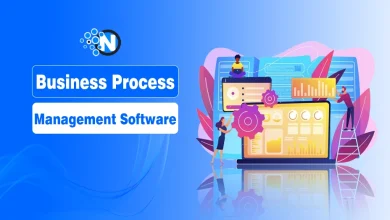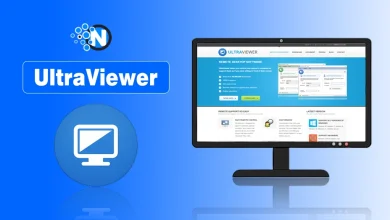ISO standards are internationally recognized, and achieving compliance shows a commitment to quality, safety, and efficiency. These standards provide a framework for best practices in different areas, such as quality management, environmental management, and information security.
Achieving compliance is often a complex and exhausting process. To prevent costly mistakes and enable a smooth way to certification, companies must carefully consider the ISO 27001 certification cost and involve a professional company experienced in ISO 27001 implementation.
In this post, I will explain the key points that are necessary to consider in detail. I will also clarify why achieving ISO 27001 compliance is important, what the main compliance components are, and provide steps to help reduce security risks.
Let’s start!
What Is ISO 27001?
ISO 27001 is an international standard that helps control information security. ISO 27001 defines a precise framework for protecting all kinds of user data and reducing information security risks. In simple words, ISO 27001 compliance is about protecting your data and proving that security is a serious priority for you.

ISO 27001: Main Components
The Information Security Management Framework (ISMS)
The ISMS is the basis of ISO 27001. It defines how an organization identifies threats, implements safeguards, and continuously improves its cybersecurity measures. It ensures your security initiatives are directly connected to your business objectives, keeping everything in sync.
Risk analysis and mitigation
An important aspect of ISO 27001 is identifying your risks. You must detect possible threats, evaluate their consequences, and find the best way to cope with them. This may be implementing protective measures, accepting certain risks, or transferring them to minimize exposure.
Annex A security measures
Annex A offers a structured list of 93 security measures across four key areas – access control, encryption, and vendor security. These measures serve as a security toolkit for organizations. You can select the most relevant ones for your business and adapt them to fit your unique requirements.
Guidelines and records
Establishing policies and having documentation are challenging tasks, but they’re vital. Achieving ISO 27001 certification required a well-defined information security policy, documented risk assessments, strategic objectives, and a specific scope for your ISMS. Proper documentation results in alignment among stakeholders and prepares your organization for audits.
Audits and ongoing enhancement
ISO 27001 is a long-term process rather than a quick one. It is a good idea to perform internal assessments and executive reviews to ensure your ISMS is effective and adapts to evolving threats or changes in your organization. Continuous improvement is implemented in the framework, which allows businesses to strengthen their security posture with time.
10 Steps to Achieve ISO 27001 Compliance

Step 1. Define responsibilities & assign roles
Success starts with the right team. Designate key individuals to establish a solid security framework for your organization.
At this stage, do the following:
- Appoint a leader. This can be an internal expert (e.g., IT manager, compliance officer) or an external consultant well-versed in ISO standards.
- Clarify responsibilities. For example, these are a documentation owner who maintains necessary records or a security coordinator who manages security implementations.
- Determine scope. Identify which areas (IT, HR, finance, etc.) fall under certification.
Tip: Start small if needed. A startup may only need one or two people to lead the process, potentially outsourcing audits to a consultant.
Step 2. Perform a gap analysis
Before you can comply, assess where you currently stand. A gap analysis highlights missing elements in your ISMS.
Do this:
- Review current policies & controls (e.g., password protocols, access restrictions, incident response plans).
- Identify deficiencies (e.g., missing risk documentation, outdated security tools, lack of employee training).
- Create a roadmap with phased improvements.
Step 3. Conduct a risk assessment
Determine potential threats, vulnerabilities, and security gaps within your organization’s assets.
Follow these actions:
- List all assets, such as physical, like servers and laptops, digital, like databases and cloud storage, and intellectual, like trade secrets and client data.
- Evaluate risks, namely threats, vulnerabilities, and impact.
- Use a risk matrix to prioritize mitigation strategies.
- Implement countermeasures, such as encryption, firewalls, access controls, and security awareness training.
Step 4. Develop & document your ISMS
A well-structured ISMS is crucial for managing risks and ensuring compliance.
Do the next:
- Classify data. Categorize based on sensitivity (e.g., confidential, internal, public).
- Establish policies.
- Leverage templates to streamline documentation, such as scope statements, security policies, risk treatment plans, and audit processes.
- Keep it updated. Revise ISMS whenever introducing new systems, expanding operations, or responding to new threats.
Step 5. Create the statement of applicability (SoA)
The SoA connects identified risks to relevant ISO 27001 Annex A controls.
This involves:
- Control justification. Why each measure is implemented or omitted.
- Implementation strategy. How controls mitigate risks.
- Documentation alignment. Ensure all security policies and ISMS elements are consistent.
Step 6. Deploy security controls
This phase involves implementing protective measures to fortify your security framework.
The key actions are:
- Technical measures (regular software updates to close vulnerabilities, encryption for secure data transmission & storage, etc)
- Operational improvements (streamlined procedures for handling sensitive information, enhanced incident response protocols)
- Comprehensive documentation
Step 7. Train employees on ISMS
Ensure staff understands compliance requirements and security responsibilities.
Training components:
- Overview of ISMS and its significance.
- Awareness of cybersecurity threats (e.g., phishing).
- Best practices for handling sensitive data.
Regular training reinforces security culture and strengthens organizational resilience.
Step 8. Conduct an internal audit
A pre-certification internal audit helps pinpoint weaknesses in your ISMS.
Audit essentials:
- Review policies & controls for effectiveness.
- Identify gaps in compliance.
- Engage an unbiased auditor (external or internal but independent).
- Fix issues proactively to strengthen readiness for the final audit.
Step 9. Complete the certification audit
The final stage includes an external audit conducted in two phases:
- Stage 1: Documentation review – Verifying policies, risk assessments, and SoA.
- Stage 2: Operational assessment – Evaluating real-world implementation.
If nonconformities arise, address them swiftly (e.g., improving security logs or refining access management). Certification validates your security commitment, enhancing credibility and customer trust & loyalty.
Step 10. Maintain continuous compliance
Certification isn’t a one-time achievement – it requires ongoing effort.
- Schedule regular audits (typically annual) to uphold compliance.
- Update risk assessments as business operations, technologies, or threats evolve.
- Adapt security measures to new challenges (e.g., adopting cloud-based security solutions).
A proactive compliance strategy not only ensures adherence but also fortifies long-term cybersecurity resilience.
Bonus Tips for ISO 27001 Compliance
Apart from the typical ISO 27001 preparation steps, these recommendations can assist you in remaining focused and preventing frequent blunders.
Commence audit readiness promptly
Don’t delay until the final moment to get ready for your formal assessment – it may result in ambiguous paperwork and hurried solutions. Employ a central project administration platform to assign duties, monitor due dates, and arrange information. A last-minute dash isn’t simply demanding – it generates mistakes.
Trap to circumvent: Numerous groups become so engrossed in paperwork that they disregard real control execution. Verify your methods conform to regulations.
Optimize audit assessments
Audits aren’t just for detecting problems – they’re a worthwhile educational resource. When auditors identify worries, investigate further and pose inquiries. Request explanations and cooperate with examiners to understand what necessitates enhancement and the rationale. Explicit dialogue currently simplifies fixes afterward.
Expert suggestion: Maintain a feedback record from each audit. It enables you to identify patterns and exhibit advancement over time.
Monitor and record advancement consistently
Disorganized or missing data can disrupt deployment. Preserve thorough chronicles of gatherings, judgments, and revisions to display advancement during audits. This also simplifies readiness and averts oversights.
Expert suggestion: Utilize online tools to automate documentation and retain everything organized and up-to-date. Your future self will be appreciative.
Don’t waver to summon specialists
ISO 27001 deployment is intricate, and suppositions can squander time and endeavor. If your workforce lacks familiarity, consult with a specialist or employ someone knowledgeable in the procedure. This will save you time, energy, and uncertainty.
Summing Up
Achieving ISO 27001 certification enhances your security framework and proves your commitment to protecting data. This guide can help you protect information while building trust with clients, partners, and employees. Yes, reaching compliance can be exhausting, but the result is worth it – reduced risks, optimized operations, and a reputation for security excellence.




